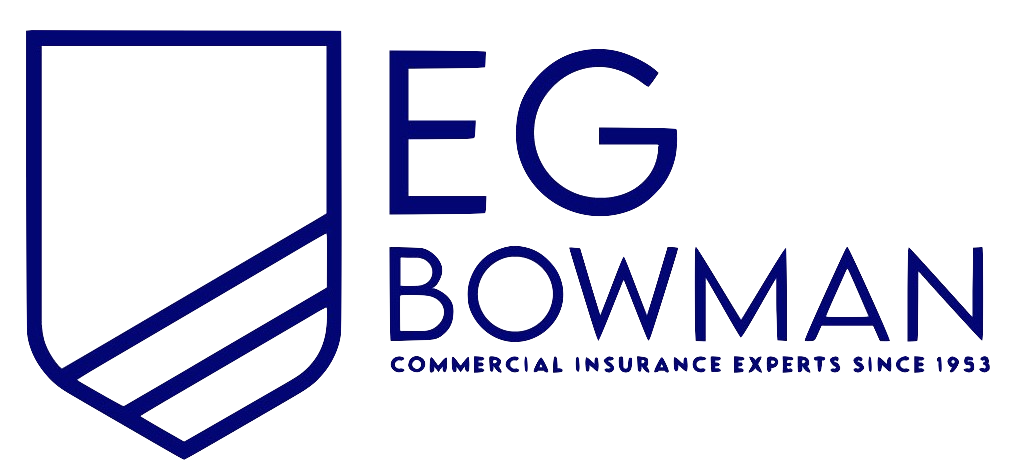New York Senior Care Facility Insurance
See How We're Different:
or Call Us: 212-425-8150

Most Common Business Policies
Index
Understanding the Basics of Senior Care Facility Insurance
Types of Insurance Coverage for Senior Care Facilities
New York State Regulations for Senior Care Facility Insurance
Choosing the Right Insurance Provider
Managing and Reducing Risks in Senior Care Facilities
Contact Us
As the demand for senior care services continues to rise in New York, understanding the intricacies of senior care facility insurance becomes essential for owners and operators. This comprehensive guide delves into the fundamentals of insurance for senior care facilities, covering the necessary types of coverage, the regulatory landscape in New York, and the criteria for selecting the right insurance provider.
Understanding the Basics of Senior Care Facility Insurance
Senior care facility insurance is designed to protect both the facility and its residents from a variety of risks. These risks can range from general accidents and liability claims to property damage and professional malpractice. An understanding of this insurance is crucial for ensuring that facilities can operate smoothly while providing quality care.
The primary function of senior care facility insurance is to mitigate financial risks that can arise from incidents, allowing operators to focus on providing a safe environment for their residents. Often, these policies can cover a broad range of potential issues that could affect both the facility and its staff. This not only helps in managing day-to-day operations but also fosters a sense of security and trust among residents and their families, who are often concerned about the safety and well-being of their loved ones.
The Importance of Insurance for Senior Care Facilities
Insurance serves many vital functions, the most significant being financial protection. Senior care facilities are often exposed to substantial liabilities due to the nature of their operations. Neglect claims, slip-and-fall accidents, and other incidents can lead to costly litigation. Moreover, the emotional toll of such incidents can be profound, impacting staff morale and the overall atmosphere of care within the facility.
Additionally, having adequate insurance is not just a best practice; it’s often a regulatory requirement. Future-proofing a business by investing in robust insurance policies can safeguard against unexpected financial hardships. Facilities that prioritize comprehensive insurance coverage are better positioned to navigate the complexities of healthcare regulations and maintain compliance, which is essential for their reputation and operational longevity.
Key Components of a Senior Care Facility Insurance Policy
There are several key components commonly included in a senior care facility insurance policy. Understanding these components can help facility owners tailor their coverage to their specific needs. Some of the essential elements include:
- General Liability Coverage
- Professional Liability Coverage
- Property Coverage
- Workers’ Compensation Insurance
- Business Interruption Insurance
Each of these components plays a significant role in safeguarding the facility’s operations and finances by addressing different types of risks. For instance, General Liability Coverage protects against claims of bodily injury or property damage that may occur on the premises, while Professional Liability Coverage is crucial for addressing claims related to the quality of care provided by staff. Property Coverage ensures that the physical assets of the facility, such as buildings and equipment, are protected from unforeseen events like fire or theft. Workers’ Compensation Insurance is essential for covering medical expenses and lost wages for employees who may be injured on the job, thereby promoting a safer workplace. Finally, Business Interruption Insurance can help cover lost income and operating expenses during periods when the facility is unable to function due to a covered event, allowing for a smoother recovery process.

Types of Insurance Coverage for Senior Care Facilities
Senior care facilities require a variety of insurance coverages to address the unique challenges they face. Understanding the different types of coverage can help ensure comprehensive risk management.
General Liability Insurance
General liability insurance is crucial for covering incidents that occur on the facility's premises. This includes slip-and-fall accidents, property damage caused by the facility, and any legal fees associated with these incidents. It acts as a shield against general claims that may arise from everyday activities within the facility.
Facilities should consider the specific risks they face to determine the appropriate coverage limits, ensuring that they are well protected against lawsuits. Additionally, implementing safety protocols and regular training for staff can help mitigate risks, potentially lowering insurance premiums over time. By fostering a culture of safety, facilities not only protect their residents but also enhance their reputation in the community.
Professional Liability Insurance
Also known as malpractice insurance, professional liability insurance protects against claims of negligence in the provision of care. This type of insurance is essential for healthcare personnel, including nurses and caregivers, as it covers legal fees and settlements from claims of inadequate care.
Facilities must recognize the importance of this coverage, as the aging population may have increasingly complex health needs, raising the stakes for care-related claims. Moreover, ongoing training and professional development for staff can play a crucial role in minimizing the risk of negligence claims. By staying updated on best practices and regulatory changes, caregivers can provide higher quality care, which not only protects them but also enhances the overall well-being of residents.
Property Insurance
Property insurance covers the physical assets of the senior care facility, including the building itself, furniture, equipment, and other contents. Events such as fires, burglaries, and natural disasters can lead to significant losses, making property insurance indispensable.
Furthermore, facilities should evaluate local risks when selecting property insurance, ensuring that they have coverage tailored to the specific challenges of their geographical location. For instance, facilities in areas prone to flooding may need additional flood insurance, while those in regions with high crime rates might consider enhanced security measures. Regular assessments of property values and risks can help facilities maintain adequate coverage and avoid unexpected financial burdens in the event of a disaster.
New York State Regulations for Senior Care Facility Insurance
New York state imposes several regulations governing insurance for senior care facilities. Understanding these regulations is crucial for compliance and optimal risk management.
Minimum Insurance Requirements
New York requires senior care facilities to maintain specific minimum insurance coverage as part of their licensing requirements. Typically, facilities must have both general and professional liability insurance in place to operate legally. These requirements ensure that facilities can manage potential claims effectively and provide a safety net for residents.
Compliance with state law helps facilities avoid penalties and ensures a level of accountability in the care provided to residents. Additionally, the financial protection afforded by these insurance policies can be a determining factor in the facility's ability to attract residents, as families are often more inclined to choose a facility that demonstrates a commitment to safety and risk management.
Understanding New York's Specific Regulations
Beyond minimum insurance requirements, New York has unique regulations that affect how senior care facilities operate. These include staffing regulations, resident rights, and the quality of care mandated by the state. The interrelation of insurance with these regulations underscores the importance of comprehensive coverage.
Understanding these regulations can also aid facility owners in staying informed about potential liabilities and areas requiring added insurance coverage. For instance, facilities must be aware of the specific training and qualifications required for staff members, as inadequate staffing or poorly trained personnel can lead to increased liability claims. Furthermore, the state mandates regular inspections and audits, which can also impact insurance costs and coverage needs. By staying abreast of these regulations, facility operators can proactively adjust their insurance policies to ensure they are adequately protected against emerging risks and compliance challenges.
Choosing the Right Insurance Provider
Choosing the right insurance provider is a crucial step for senior care facilities. The insurance landscape is diverse, with many providers offering various plans tailored to the industry. With the growing demand for senior care services, it’s essential for facilities to secure coverage that not only meets regulatory requirements but also protects their assets and residents effectively.
Factors to Consider When Selecting a Provider
When evaluating insurance providers, several factors should be taken into account:
- Experience in the senior care industry
- Reputation and financial stability
- Customer service and claims support
- Policy customization options
- Reviews and testimonials from other senior facilities
These factors can help facility owners identify a reliable provider that meets their specific insurance needs. Additionally, it is beneficial to assess the provider’s understanding of the unique challenges faced by senior care facilities, such as liability risks associated with patient care and the importance of compliance with state regulations. A provider with a strong background in senior care can offer insights and solutions tailored to the nuances of the industry, ensuring that facilities are adequately covered.
Evaluating Insurance Quotes
Once potential providers have been identified, it's essential to carefully evaluate their quotes. Comparing premiums, coverage limits, deductibles, and exclusions in the policies is vital for making an informed decision. It’s also important to consider the specific needs of the facility, such as the types of services offered and the demographics of the residents, which can influence the level of risk and, consequently, the insurance requirements.
Taking the time to review these elements can help facility operators find the best value for their investment while ensuring adequate protection against risks. Engaging with a broker who specializes in senior care insurance can further enhance this process, as they can provide valuable insights and help navigate the complexities of different policies. Furthermore, understanding the claims process and the provider's track record in handling claims efficiently can also play a significant role in the decision-making process, ensuring that facilities are not left vulnerable in times of need.

Managing and Reducing Risks in Senior Care Facilities
Risk management is an integral aspect of operating a senior care facility. By proactively addressing potential hazards, facilities can often reduce their insurance premiums and minimize claims.
Implementing Safety Measures
Implementing safety measures is one of the most effective ways to mitigate risks. Facilities can establish protocols for preventing accidents, ensuring that the environment is both safe and accessible for residents. Regular safety audits and maintenance of equipment can significantly decrease incidents.
Training staff in safety procedures further cultivates a culture of safety within the facility, making it a priority for everyone involved. This culture not only enhances the safety of residents but also empowers staff to take ownership of their roles in maintaining a secure environment. Furthermore, incorporating technology, such as surveillance systems and emergency alert devices, can provide an additional layer of protection, allowing for quicker responses in case of emergencies.
Regular Staff Training and Education
Ongoing staff training is critical in addressing the various challenges faced in senior care environments. Training programs should cover emergency response, resident care standards, and safety protocols to equip staff with the necessary skills to manage risks effectively.
Additionally, keeping staff updated on changes in regulations and best practices ensures that facilities remain compliant and minimize liabilities. Regular workshops and simulation exercises can reinforce learning and prepare staff for real-life scenarios, fostering confidence and competence. Moreover, involving staff in the development of training programs can lead to more relevant content and increased engagement, ultimately enhancing the overall quality of care provided to residents.
Incorporating feedback from staff about their experiences and challenges can also lead to improved training methods. This feedback loop not only helps in refining training protocols but also encourages a sense of community and collaboration among the staff, which is essential in creating a supportive work environment. By prioritizing continuous education and open communication, senior care facilities can better navigate the complexities of risk management while ensuring the well-being of their residents.
Understanding how to navigate insurance claims is essential for facilities to resolve issues quickly and efficiently when they arise. The complexity of insurance policies and the unique challenges faced by senior care facilities necessitate a proactive approach to risk management and claims processing.
When and How to File a Claim
Filing an insurance claim should be done promptly, ideally immediately after an incident occurs. Facilities should document the events thoroughly, gather any necessary evidence, and report the incident to their insurer according to their policy guidelines. This includes collecting witness statements, photographs of the incident scene, and any relevant medical records that may pertain to the claim.
Having established procedures for filing claims can streamline the process and ensure that all relevant information is provided to the insurance provider. Regular training sessions for staff on these procedures can also enhance their understanding and preparedness, minimizing delays and errors in the claims process. Additionally, maintaining a detailed log of incidents can help identify patterns that may require further attention or preventative measures.
Dealing with Insurance Disputes
Disputes can arise during the insurance claim process, especially regarding coverage limits or liability determinations. Facilities should be prepared to negotiate with insurers and may need to provide additional documentation to support their claims. This could include expert opinions, detailed incident reports, and evidence of compliance with safety regulations, which can bolster the facility's position during negotiations.
Seeking legal advice in more complicated disputes can also be beneficial, ensuring that facility operators have experts advocating for their interests. Engaging with a specialized attorney who understands the nuances of senior care and insurance law can provide invaluable insights and strategies for navigating challenging situations. Furthermore, facilities should consider establishing relationships with insurance adjusters and claims representatives, as building rapport can sometimes facilitate smoother negotiations and quicker resolutions to disputes.
Future Trends in Senior Care Facility Insurance
As the landscape of senior care continues to evolve, so too does the insurance framework supporting these facilities. A few trends are emerging that are reshaping how insurance is viewed and implemented in this sector.
Impact of Technological Advancements
Technological advancements are dramatically influencing the senior care landscape. From telehealth services to advanced monitoring systems, technology can enhance care quality while also impacting insurance requirements. Policies may start to incorporate special coverage for new technologies or provide discounts for facilities that implement innovative solutions for safety and care.
Staying abreast of these advancements will be crucial for facility operators and their insurance providers as they navigate evolving risks and liabilities.
Changing Demographics and Their Influence on Insurance
As the demographics of New York's population change, so do the needs and risks associated with senior care facilities. An aging population with varying health conditions may lead to increased liability and greater demand for specialized coverage.
Insurance providers will need to adapt their offerings to accommodate these demographic shifts and the complexities they bring, resulting in more customized policies for senior care facilities.
In conclusion, understanding senior care facility insurance is imperative for operators in New York. Navigating the complexities of insurance policies, regulations, and risks allows facilities to provide quality care while protecting their financial interests. By staying informed and proactive, senior care facilities can ensure they are well-equipped to face the inevitable challenges of the industry.
